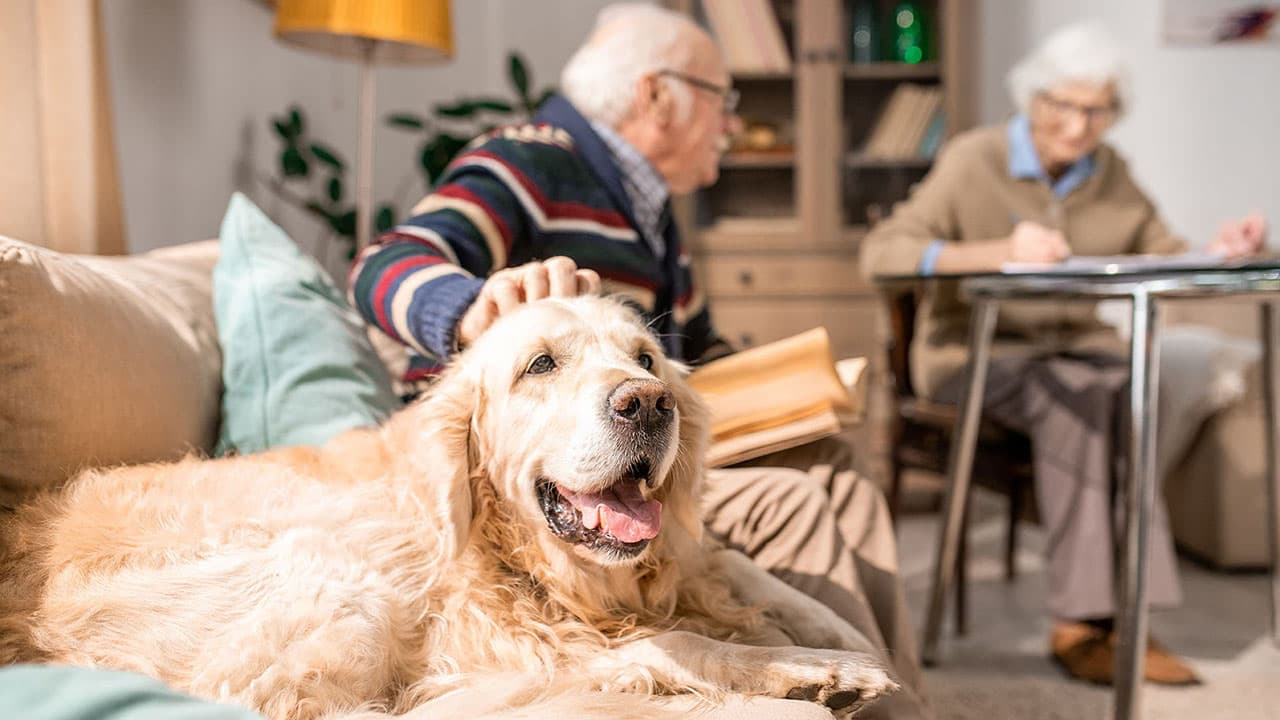
Dogs are one of the most loyal companions. They love to cuddle and play and form deep bonds with their owners. However, as they age, some dogs experience vision problems that affect their quality of life. This article will discuss the causes of degenerative eye diseases in older dogs and how to manage them.
Common Causes of Blindness in Dogs
Like humans, your dog’s vision might deteriorate with age, disease, accident, or inherited diseases. Vision loss, ranging from slight difficulties to total blindness, is sometimes associated with normal ageing. Common causes of canine blindness include:
Glaucoma
Glaucoma is another common cause of visual loss in older dogs; however, unlike cataracts, it’s associated with high pressure inside the eye due to increased fluid retention (called ocular hypertension). This high pressure damages retinal cells that produce photoreceptor cells to convert light into electrical signals for processing by nerve cells before sending them back through optic nerve fibres into brain areas responsible for visual processing, like what happens when seeing something far away or reading text on paper (called central vision), near vision (reading books at arm’s length), distance sighted objects through binocular overlap mechanism which allows two identical images from left eye + right eye combined into one single image using cross-eyed viewing technique, so you don’t get double images when looking at things simultaneously instead get only single viewport showing both eyes’ views simultaneously without distortion(goodbye ghosting effect).”
Cataracts
Cataracts are a common cause of vision loss in older dogs. Cataracts are clouding the lens, which causes light to be lost. They can occur in both eyes or one eye and affect a dog’s vision by causing blurred vision or complete blindness. The condition may be inherited, but it’s rarely related to breeding. Most dogs with cataracts will experience it between 1 and 3 years old and should be treated promptly, so their eyesight doesn’t worsen over time. When your dog has cataracts, you’ll want them checked out by a veterinarian regularly—especially if any symptoms develop, such as night blindness or loss of peripheral vision—and then treated if necessary with surgery (commonly called intraocular lens implantation).
Progressive Retinal Atrophy (PRA)
PRA is a degenerative eye disease that causes blindness in dogs. It’s inherited and can be detected by a veterinarian or the owner noticing changes in your dog’s vision.
PRA treatment involves medication to keep the retinas functioning correctly, but it’s not 100 percent effective. If you have PRA-positive dogs, they should be tested regularly as they age, so owners know how long their pets will live with the disease and how much time they have left before they become blind.
Progressive Retinal Atrophy (PRA)
Progressive retinal atrophy (PRA) is a genetic disease that causes retina degeneration. The disease is not painful, but it can cause night blindness and loss of vision in daylight. PRA has no cure, but there are ways to slow its progression. Feeding your dog a high-quality diet rich in omega-3 fatty acids, antioxidants, and other nutrients will help keep his eyes healthy—and may even slow down progression if he’s already showing signs of PRA.
Age-related macular degeneration (AMD).
Age-related macular degeneration (AMD). This condition affects the macula, the centre part of your dog’s retina. It occurs when cells in the eye die and become damaged over time. Losing these cells leads to blurred vision and, eventually, blindness if left untreated. AMD is common among older dogs, but it doesn’t mean your pet will go blind immediately; it typically takes several years before symptoms appear.
Treatment of Vision Problems in Dogs
Regarding your pet’s eyesight, it is preferable to err on the side of caution rather than delay therapy. Consult your veterinarian immediately if you observe any of the symptoms above in your dog or any other alarming indicators of eyesight loss. Vision disorders rarely resolve independently, and early intervention is crucial in most cases of visual impairment.
Some illnesses that might lead to blindness may cause other problems, or visual problems may indicate a more severe condition. The best method to prevent more issues and save your dog’s eyesight and overall health is to schedule a comprehensive evaluation with your veterinarian.
Supplements for Eye Problems in Older Dogs
Vitamins and minerals are essential for your dog’s eye health. Vitamin C, zinc and selenium are antioxidants that help keep the blood vessels in their eyes clear of free radicals. Omega 3 fatty acids have been shown to reduce inflammation and improve vision in older dogs with dry eye syndrome (also known as keratoconjunctivitis sicca).
Selenium is an essential mineral that helps prevent oxidative damage to cells in the body; it also helps maintain healthy blood flow through the lymph system by supporting collagen production. Lutein is a carotenoid found in plants such as spinach that has been shown to improve night vision when added to diets containing lutein-like compounds from fish oil supplements or krill oil capsules (which can be obtained without a prescription).
Clear Vision Complex Chews for Dog Eye Health
Intense Vision Support for Dogs is the most advanced and powerful dog supplement. Our Intense Vision Supplements support the overall health of your dog’s eyes, lower the chances of potential vision problems, and assist in dealing with eye problems.
Taking Care of a Vision Problem in Older Dogs
If your dog has vision problems, keeping him safe and clean is essential. The first thing you should do is make sure he’s getting enough food. If he isn’t eating well, his eyes will become dry and irritated, leading to pain and infection in the eye. Another thing that could cause damage is if a dog with vision problems doesn’t get enough exercise—his muscles need exercise just like ours do!
It would help if you also kept an eye out for any signs of injury or illness, such as redness around the eye area due to irritation caused by something like dust particles entering through contact lenses (these are common reasons why older dogs’ eyes may look red). You should also check for swelling around their eyelids because these injuries often occur when dogs rub against things inside their house that might be sharp-edged or otherwise uncomfortable.
Conclusion
It’s important to remember that dogs have many causes of vision problems. A dog with no symptoms can still have a vision problem, so it’s essential to watch for changes in your dog’s eyes. If you suspect your dog is experiencing eye issues, take them to the veterinarian immediately for treatment!


